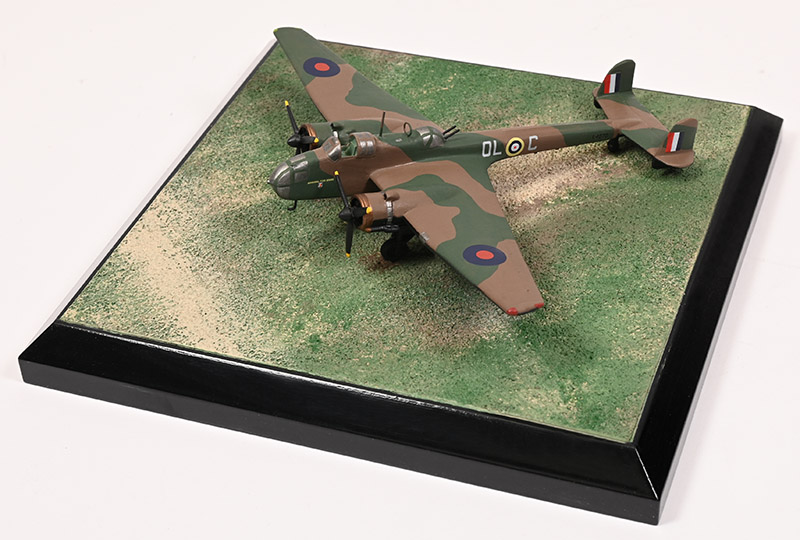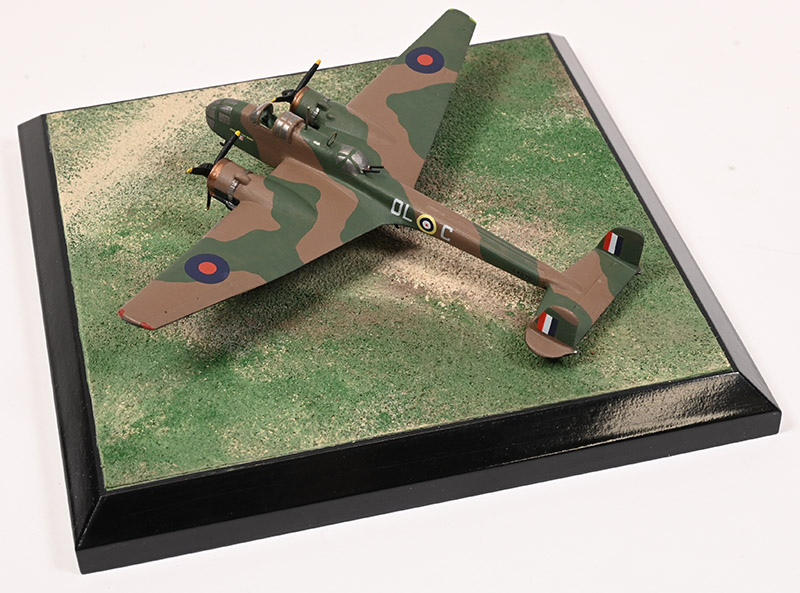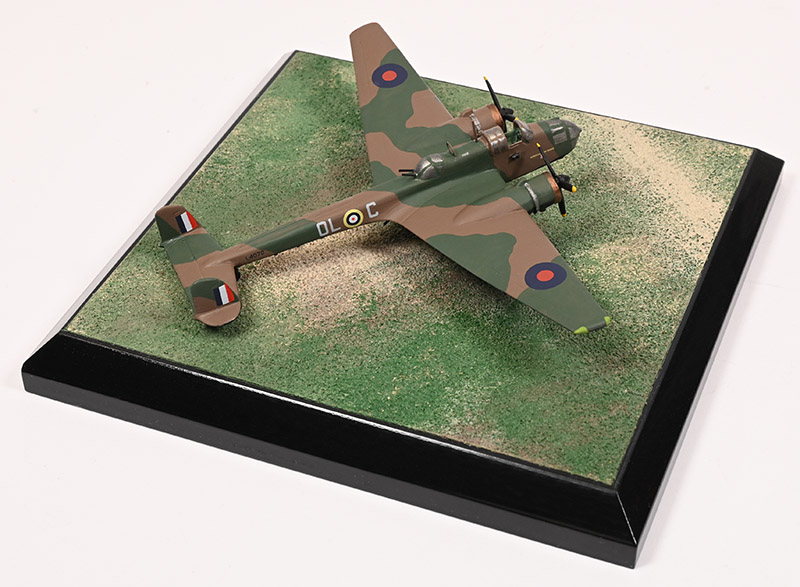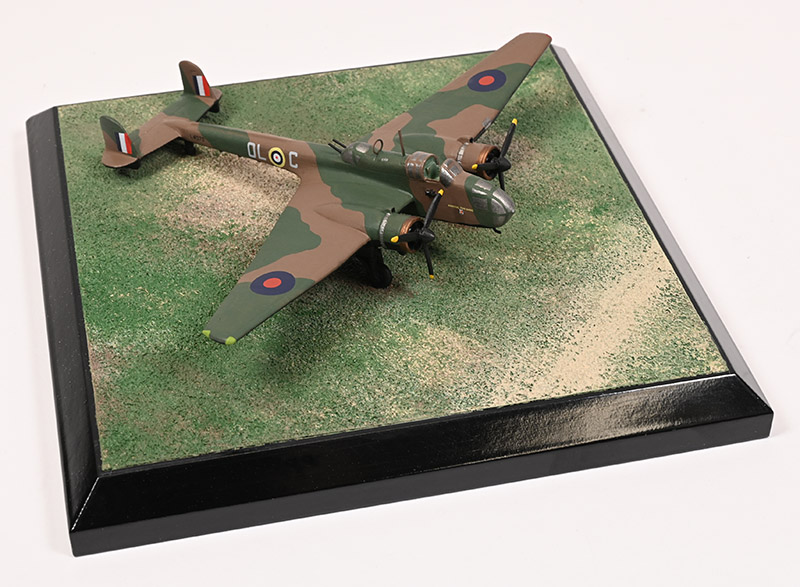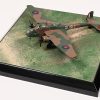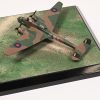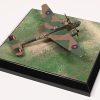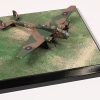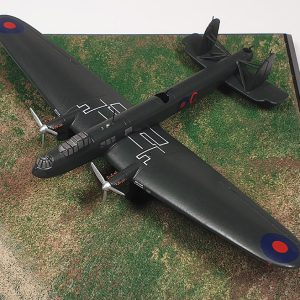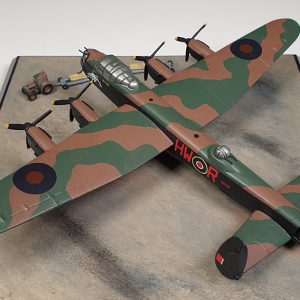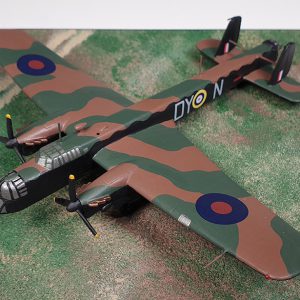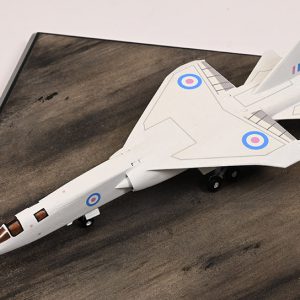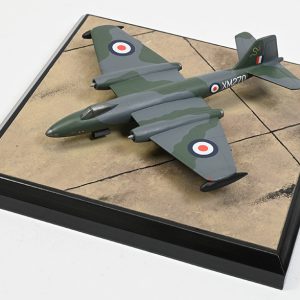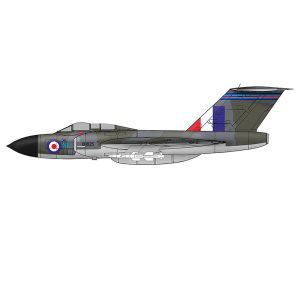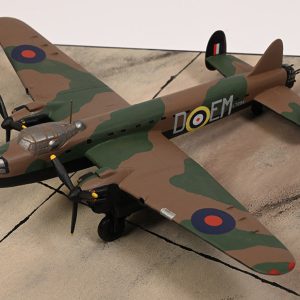Handley Page Hampden L4070 OL-C “Admiral Foo Bang”
83 Squadron, Flying Officer Guy Gibson, Scampton, England, 1940
In 1932, the Air Ministry issued Specification B.9/32 seeking a twin-engined day bomber with higher performance than any preceding bomber aircraft. Accordingly, Handley Page responded with their design to meet the requirements. The design team, led by George Volkert, drafted a radical aircraft design, initially focusing upon the Rolls-Royce Goshawk engine. However, by mid-1934, development of the Goshawk looked less promising and thus the Air Ministry acted to relax the tare weight (unloaded weight) requirement of the specification, allowing for the use of heavier and more powerful radial engines such as the Bristol Perseus and Bristol Pegasus.
During early 1936, the first prototype, designated as the HP.52 and given the serial number K4240, was completed. On seeing the narrow, deep fuselage, which was only 3 ft wide, C. G. Grey, founder of The Aeroplane magazine, remarked “it looks like a flying suitcase”, a nickname that stuck with the aircraft for its lifetime. On 21st June 1936, the prototype, powered by a pair of Bristol Pegasus P.E.5S(A) engines, conducted its maiden flight from Radlett Aerodrome, Hertfordshire, piloted by Handley-Page Chief Test Pilot Major James Cordes. In response to the successful flight trials performed by K4240, the Air Ministry issued an initial production order for the type, ordering 180 aircraft. Concurrently, a second order for 100 aircraft, powered by Napier Dagger engines, was issued to Belfast-based Short & Harland. In July 1940, Handley-Page terminated its own production line for the Hampden upon the completion of its 500th aircraft.
Guy Gibson’s war started flying Hampden bombers with 83 Squadron. On 3rd September 1939, L4070 was one of nine Hampdens of 83 Squadron were put on immediate standby, fully armed, for the first war sorties. At 6.15pm six of these, including Gibson’s plane, took off from Scampton with orders to bomb German naval units. For the next seven months, 83 Squadron flew no war sorties, apart from a few occasional sea patrols during a brief detachment to Lossiemouth, Scotland. Gibson’s second operational sortie was on 11th April 1940. The period from April to September 1940 was one of the most intense periods of Gibson’s flying career. He completed 34 operations in five months, with ten in June alone. The types of operation varied from “gardening”, that is laying mines in various seaways and harbour entrances, to attacks on capital ships, as well as attacks on ground-based military and economic targets. During this time, he acquired a reputation for being seemingly fearless, particularly as he was willing to fly in marginal weather. In July 1940 he was awarded the Distinguished Flying Cross.
“There is an entry in Gibson’s log book which reads: “June 13, 1940 – Hampden L4070 – pilot: self and crew – duty: bombing Ghent and England (nearly): time 7.15 hours.” Whilst returning from a mission to attack a German military headquarters at Ghent, L4070 lost its bearings. Gibson concludes his story by saying “Suddenly an aerodrome loomed up in front, and I opened my bomb doors in desperation. Just as my finger was playing with the button I thought I recognised the field. Yes, no doubt about it now. This was Harwell and this was England. I slammed the bomb doors shut and quickly turned on to a new course.” L4070 was lost later that year on a mission to bomb Munchengladbach. On 30th August 1940 the aircraft crashed at Angerlo (Gelderland), 14 km east of Arnhem, Holland.
L4070, coded OL-C, carried the name Admiral Foo Bang on its port side. Camouflage patterns for Hampdens often fail to conform to standard air ministry directives about application of A and B type dark earth / dark green schemes. From the available wartime photos of L4070 it is not possible to observe the pattern of upper surface colours. L4070 like many other Hampdens whose serial number ends with a “0” is therefore finished in A scheme. The name “Admiral Foo Bang” is painted in yellow with red colouring on the port side of the nose.


